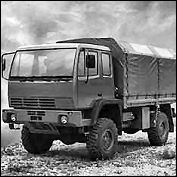 Meritor, a Michigan-based manufacturer of vehicle parts, recently agreed to pay $100,000 to the Bureau of Industry and Security (“BIS”) to settle various allegations that it had illegally exported vehicle parts and technology without required export licenses. One settled count dealt with deemed exports to an Indian national who was a U.S.-based employee. The charges and the large fine arose from Meritor’s voluntary disclosure of the export violations to BIS. Of course, we all know that BIS will justify whacking Meritor for its voluntary disclosure on the grounds that BIS could have fined Meritor 3.5 million dollars and imposed a perpetual export denial order for the 14 export violations that Meritor disclosed. Cold comfort, as they say.
Meritor, a Michigan-based manufacturer of vehicle parts, recently agreed to pay $100,000 to the Bureau of Industry and Security (“BIS”) to settle various allegations that it had illegally exported vehicle parts and technology without required export licenses. One settled count dealt with deemed exports to an Indian national who was a U.S.-based employee. The charges and the large fine arose from Meritor’s voluntary disclosure of the export violations to BIS. Of course, we all know that BIS will justify whacking Meritor for its voluntary disclosure on the grounds that BIS could have fined Meritor 3.5 million dollars and imposed a perpetual export denial order for the 14 export violations that Meritor disclosed. Cold comfort, as they say.
For the most part, the exports of parts and technology related to the U.S. Army’s Family of Medium Tactical Vehicles (“FMTV”) which would clearly be classified as ECCNs 9A018 and 9E018. For two of the charged violations, however, it’s not clear what the parts were or why the parts and related technology would be classified as 9A018 or 9E018.
In a 2005 export to China, the exported items are only described as “various axles” that Meritor believed were “to be incorporated into a prototype of a commercial diesel vehicle.” Unlike the FMTV parts, it’s not obvious that these parts were for vehicles “modified for non-combat military use” as required by the language of ECCN 9A018, particularly as they were destined for commercial diesel vehicles. This charge was sloppy in at least one other respect. The Settlement Agreement and the Order both referred to the exported axles as being valued at $45,150, even though the Charging Letter specified the value as $2,057.86. Careless copy-and-pasting coupled with sloppy proofreading were the culprits, no doubt.
For the deemed export charge, the BIS documents describe the technology as technical drawings that “depicted axle assemblies for two vehicle platforms, one for a tractor-trailer and another for a heavy-duty truck.” Again, technical drawings described in that fashion would not be controlled by ECCN 9E018 since they don’t relate to vehicles modified for non-combat military use. Without more, nothing prohibits the export of drawings of axle assemblies for tractor-trailers or for heavy-duty trucks. Presumably these would be for military tractor-trailers and military heavy-duty trucks, but the charging documents do not make that clear. The problem with such careless drafting is that members of the public who read these documents might well think that all drawings of axle assemblies for all tractor-trailers and heavy-duty trucks are export controlled, which is definitively not the case.
 Permalink
Permalink
Copyright © 2011 Clif Burns. All Rights Reserved.
(No republication, syndication or use permitted without my consent.)

 Posted by
Posted by  Category:
Category: 

